Google AdWords has dominated the Pay-Per-Click (PPC) scene for a long time, and as of this writing, it continues to enjoy the top spot. Although many marketers put Google AdWords before anything else in their PPC budget, there are several reasons why expanding campaigns beyond AdWords is an option that should be thoroughly considered.
For instance, there’s always a chance that you won’t get sufficient traffic from Google AdWords, especially when your brand is new and lacks awareness. On the flip side, excess traffic may lead to adverse consequences such as low CTRs, higher bids, and low conversion volumes.
While other platforms may lag behind, some are slowly catching up to the undisputed search-engine giant.
Without further ado, let’s talk about some of the major alternative platforms for taking your advertising campaigns beyond Google AdWords.
Bing Ads
According to NetMarketShare, in 2017, Google had over 79% of all global desktop search traffic, followed by Bing at 7.27%, Baidu at 6.55% and Yahoo at 5.06%. In the USA, Microsoft Sites handled 22.8% of the search queries in April 2017.
Additionally, while Google may enjoy the lion’s share of the US search market, especially in the mobile search market (over 93% market share), Bing takes the lead when it comes to the longer search queries. Let’s not forget that 50% of search queries are four words or longer.
You may also find solace in the fact that the Bing Yahoo! Network traffic is on the rise and cost-per-click is still relatively low. Bing Ads budgets are typically 20-35% the cost of AdWords. As per ReportGarden, the average CPC comes around $7.99 on Bing Ads, whereas it is $20.08 on Google AdWords.
By default, Bing Ads show ads on its “Search Network.” This includes Bing, Yahoo! and the syndicated search partners. Because these partners have low-quality traffic, changing the default option to “Bing and Yahoo! search only” is a big help.
You can assign different campaigns for different time zones and change various details in the ad group level without creating new campaigns. Bing also has better social extensions and allows demographic-based targeting. But the best feature of Bing Ads is that you can import your campaign directly from Google AdWords.
Steps to export Google AdWords in Bing
- Create a Bing Ads account
- Log into the AdWords account on Google
- Import it into Bing Ads
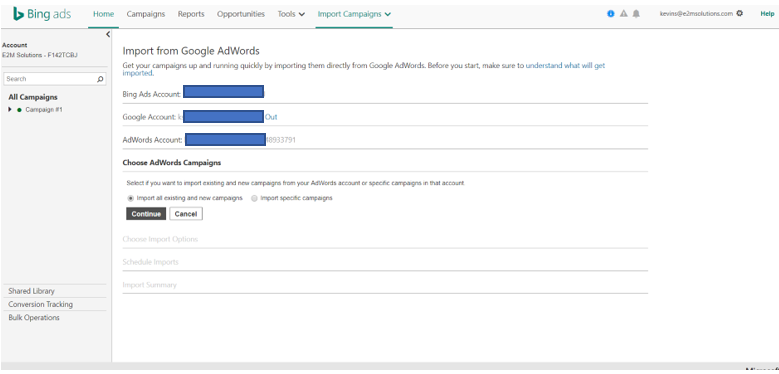
The Caveat: Thoroughly check the geo-targeting settings in the campaign before the import, as there may be a discrepancy once they are copied over to the Bing Ads. Also, you need to remember that Bing Ads resets the geo-targeting settings to default if it fails to recognize it correctly. In this scenario, the ads will only be shown to audiences in USA and Canada.
A few years back, Ogilvy and Mather predicted the demise of organic reach on Facebook; something that has certainly come true. Facebook’s January 2018 update all but confirmed this phenomenon, forcing many brands and public pages to completely revamp their playbook. These days, paid promotions and sponsored posts are practically a prerequisite for any brand wanting to achieve the desired results on the platform.
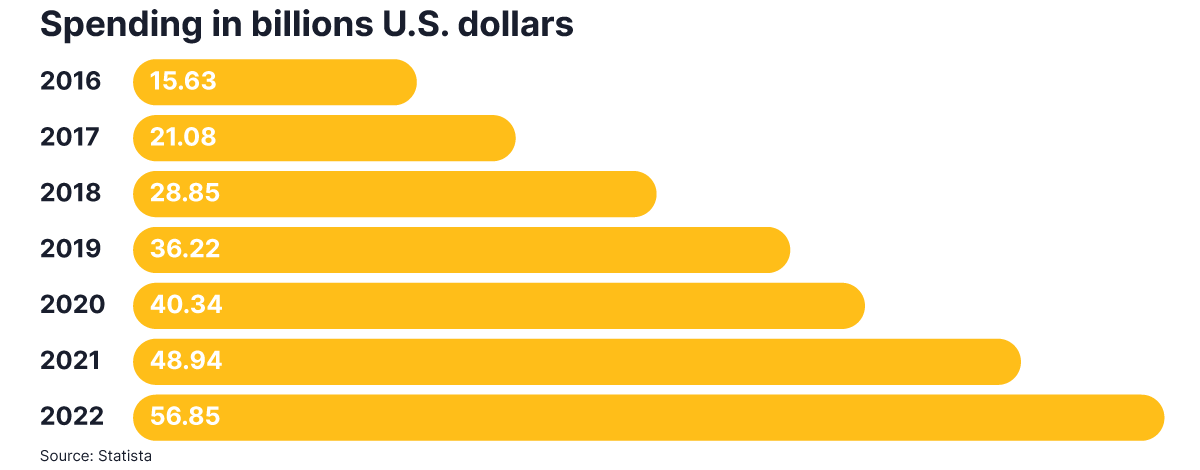
In terms of paid social media ads, Facebook is the clear winner with 84% of the market share, followed by Google Ads at 41% and LinkedIn Ads at 18%.
Facebook Ad Manager gives several options for marketers to come up with a stellar PPC campaign that works for your brand and content strategy. By using different campaign types, you can focus on increasing reach, building awareness, and increasing funnel-driven conversions.
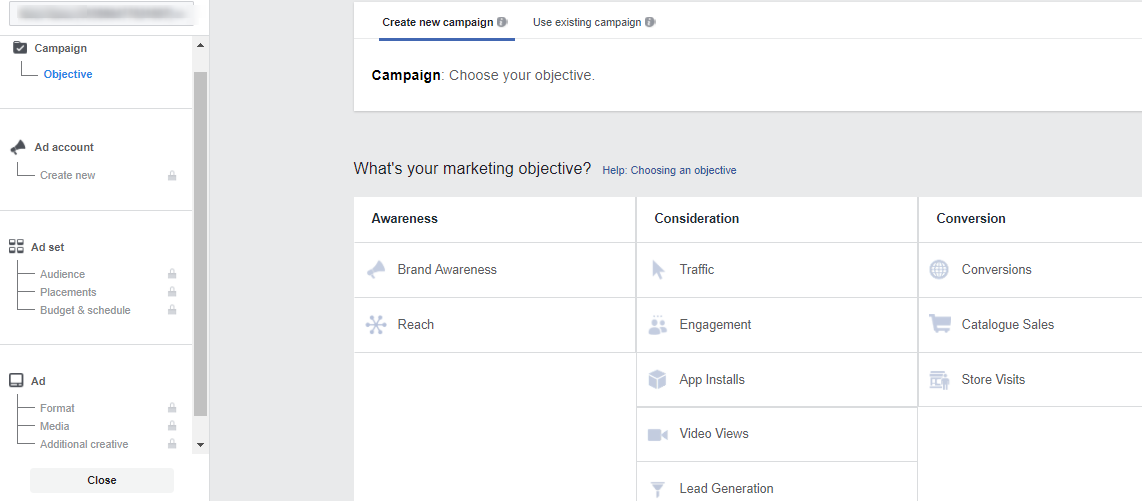
The steps are fairly simple:
- Go the Facebook Ads Manager to create a new campaign.
- If you don’t have an ad account, you’ll need to set it up before proceeding further.
- Choose the campaign objective and provide your input based on what you want to target. This includes – Brand Awareness, Reach, Traffic, Engagement, App Installs, Video Views, Lead Generation, Conversions, Catalogue Sales, and Store Visits.
- Additionally, you can also conduct split tests (available for some of the campaign objectives) to see which of your campaigns are doing better on the platform.
- Define the audience, placement of the ads on various devices, and set the budget and schedule.
- Next, select the format of the ad, the media, and add any other creative material that you may have.
Each of these steps has several sub steps that you need to take care of before moving ahead. Also, Facebook has a maximum lifetime budget spend, which you need to take into consideration as you cannot spend any more beyond this number. Alternatively, you can set a limit to the advertising budget.
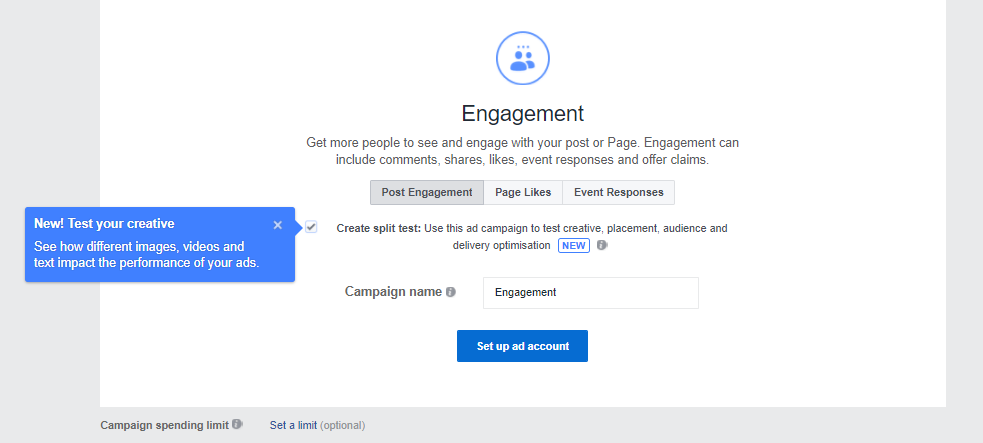
It’s important to know that Facebook keeps making changes to its ad manager with different ad types and integrations, such as introducing the Facebook Pixel, which takes advertising on the platform to an entirely new level by allowing you to measure the effectiveness of the advertisements.
The platform not only offers a custom audience pixel for retargeting the visitors on your website, but also offers website conversion tracking, which includes sales. To sum it up, Facebook Pixel offers optimization, retargeting, and tracking all in one platform.
When advertising on Facebook, take your pick from the options based on what you want the ad to do, where you want them, then select the ad type.
With nearly 3 billion users, Facebook advertising should definitely be a part of your marketing agenda – but not all of it! YouTube isn’t too far behind. So if it makes sense to dedicate some marketing resources to YouTube, then you’ll have plenty of users to promote to.
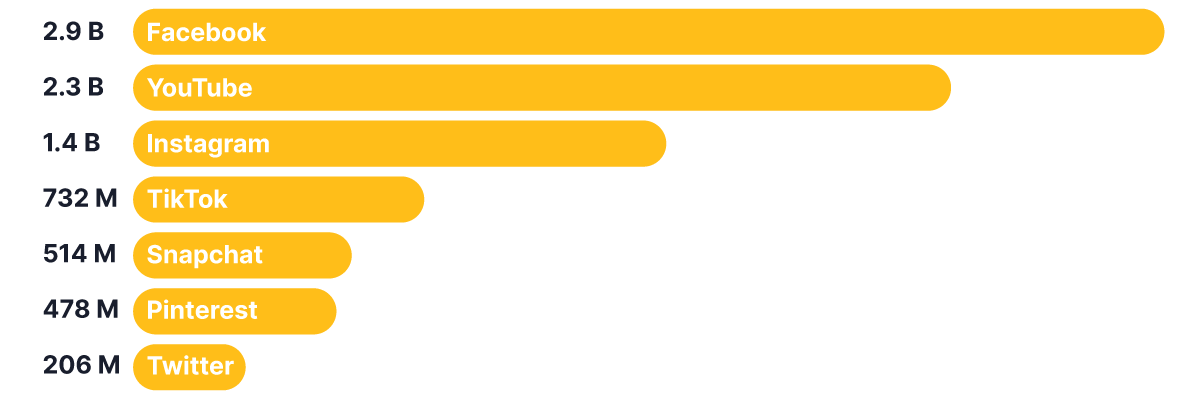
While you are using the Facebook advertising system, it becomes possible to reach users on Instagram as well.
The main benefit of Instagram Ads is that they are non-intrusive and have a higher engagement rate, as opposed to other social media platforms. And unlike other platforms, Instagram measures the success of a campaign based on reach, recall, and awareness. When it comes to ROI and cost, Instagram is one of the best options out there.
In Q4, 2017, Instagram had 8% of the paid social ad spend. The platform also boasted of a 99% year-over-year increase in impressions.
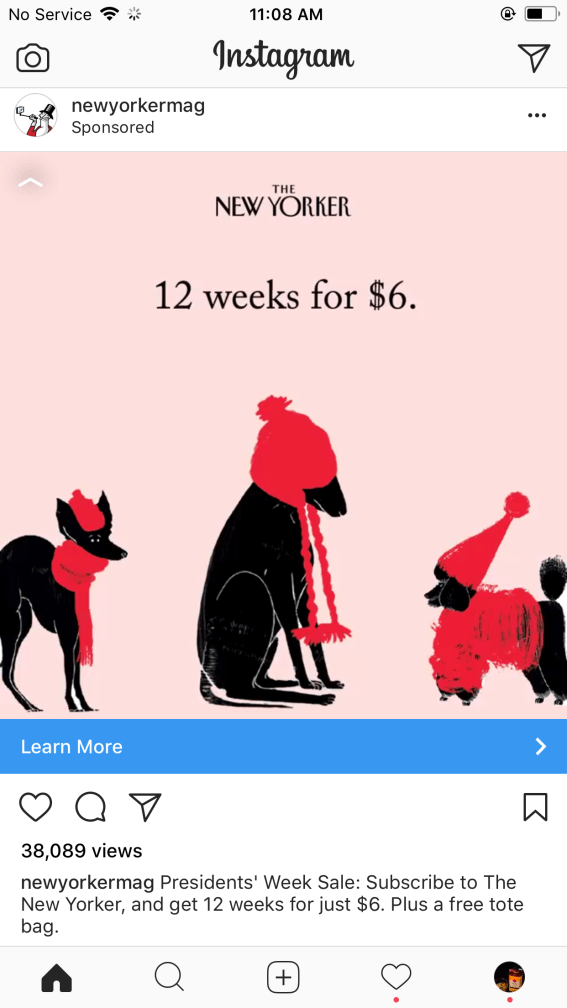
You can also get the most from Instagram advertising by integrating your campaign with Facebook and Shopify. This increases your chance of getting spotted as you can make any Instagram post “shoppable.”
The steps include:
- Installing Facebook catalogue via the Facebook channel on Shopify
- Setting up an Instagram Business Account
- Meeting the product requirements
In addition to the photo, video, and carousel ads, Instagram also offers another option known as the Stories Ads. To win at Instagram advertising, don’t forget to use this feature to capture the imagination of your target audience.
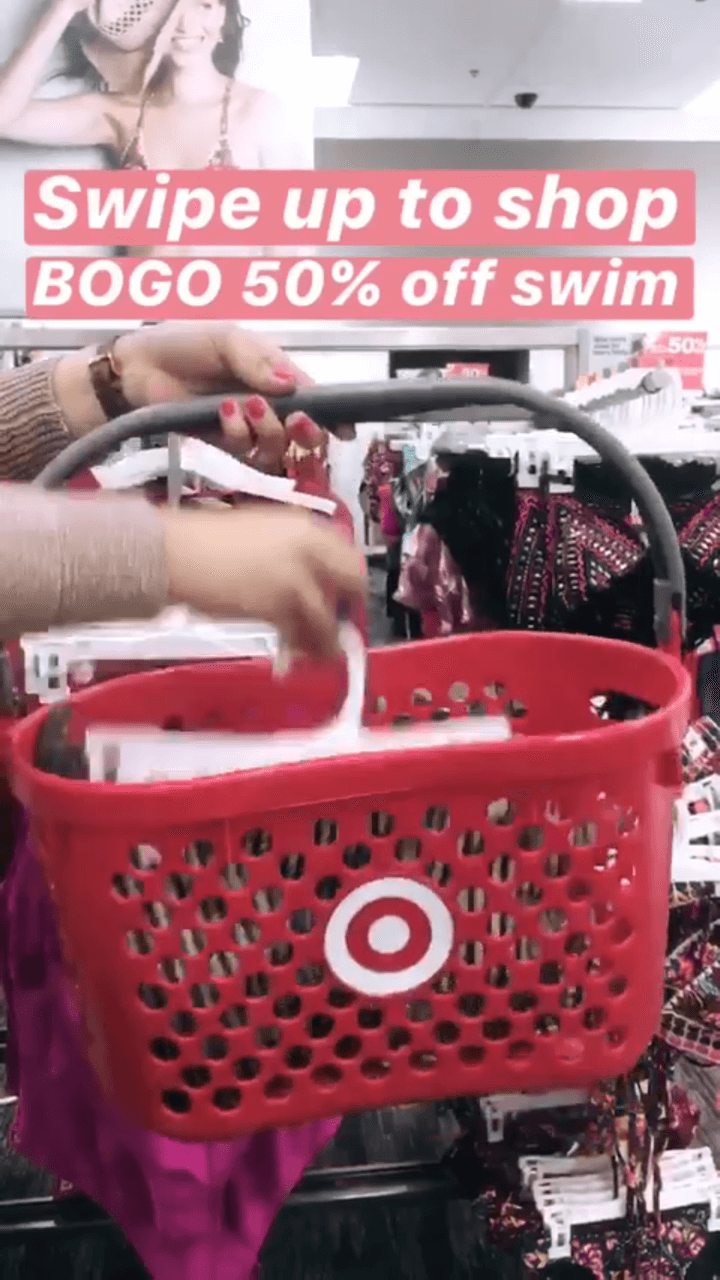
Here’s how you can create ads to run on Stories:
- Go to the Ads Manager on Facebook and opt for ‘Create an Ad.’
- Choose the objective (Reach, Video views, Conversions, App installs, Lead Generation, or Traffic).
- Click Placements in the Ad Set section. Edit the Placements and select Instagram as the placement option.
- Click Stories and follow the steps to build the campaign.
- Review, and publish the ad, which can then run on Instagram.
The Stories Ads can be targeted to the audience who’ve already seen your ad on Facebook or Instagram.
LinkedIn is the platform you need to target for B2B lead generation, as it offers an unparalleled opportunity for PPC accounts and provides exclusive targeting opportunities via skills, job title, company, specific businesses, member schools, etc.
The reason is fairly simple.
LinkedIn is a professional social networking site, and hence, the users are already in work mode when they use the platform. In other words, they are thinking about companies to follow, doing basic research about job opportunities, finding more information about their competitors, etc.
However, exclusive targeting is not the only reason to opt for LinkedIn advertising.
It offers you a lot for the minimum daily budget. It can also run on a pay-per-performance model. Therefore, only those who’ve clicked and saw the ad will reflect in the costs (CPC). Alternatively, you can opt for the pay-per-impression (CPM) wherein the payment is done when someone views your ad.
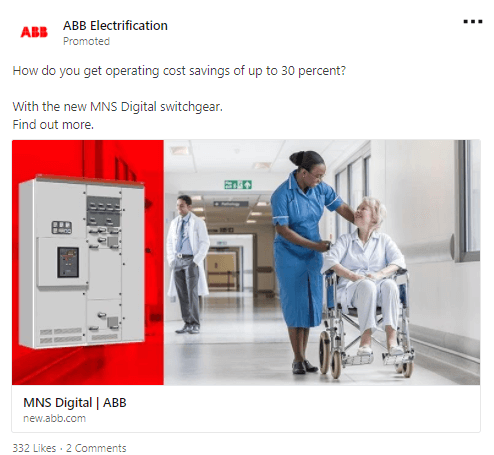
The three ad units on the platform are:
- Sponsored Content
Sponsored content is the best way to gain engagement on LinkedIn, but is more expensive due to its high reach. There are several variants providing endless possibilities to marketers, which mimics ads on other platforms’ newsfeeds. The ads will come with a “sponsored” tag and you can opt for them if you have a company page. These ads can help drive conversions, as well as brand awareness, and usually shows up on the top of the users’ newsfeed, increasing the visibility. - Text Ads
Text ads on LinkedIn will help you select the professional audience of your choice. You can easily create ads, set a budget, and pay for the ads on a CPM or CPC model. It also helps monitor the leads you get from the ads on the platform with conversion tracking. - Sponsored InMail
Sponsored InMail came way before Facebook’s Messenger ads. The topmost advantage of these ads is that you can send the user an immediate notification, giving it a better chance of being viewed. This increases the chance of a conversation and engagement.
Also, you can add the “LinkedIn Partner” network so your audience can view the text ads on SlideShare and other partners.
GeoFence Advertising
There’s a newer advertising method in town and it’s incredible for targeted advertising. For example, let’s say you are a fresh produce brand and you want to target people while they’re at the grocery store. With this technology, you can do that!
This functionality works primarily with apps that allow location tracking, like the Weather app, for example.
Not only can you target them while they’re in the store, you can retarget them later when they’ve returned home from the store.
This works for services as well! Attending a conference that has a lot of people in your target market? Create a GeoFence ad and get in front of the right people.
Bonus Tip:
You can use LinkedIn contacts for custom ad targeting on Facebook and Google AdWords. This simple formula will help you get the desired results after fine-tuning the advertising campaign. Here’s what you need to do:
-
- Make sure that you have more than 100 contacts on LinkedIn.
- Export this list from LinkedIn to a CSV file by going to My Networks > Manage Sync and Imported Contacts. This will take you to a new page, where you have to select Advanced Options > Export Contacts. You will be prompted to sign in to your LinkedIn account. Click Request Archive and wait for it. You’ll receive a notification on the Primary Email address with a link to where you can download the list.
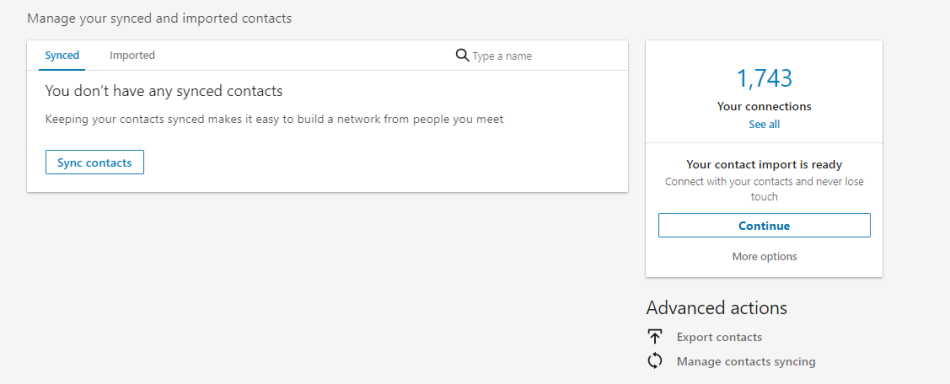
- On Google AdWords, go to the Shared Library > Audiences > Customer Email and upload the CSV File.
- On Facebook Ads, go to Audiences > Custom Audience > Import the CSV file(s).
Final Thoughts:
The online advertising realm is a fascinating place. The more you explore it, you will learn that there is a lot more out there beyond Google AdWords. These are some of the fantastic alternatives that can help you reach a broader audience and gain more leads and sales. Even if you don’t want to shift to new avenues almost immediately, you can surely set some budget aside, experiment with other platforms, and see how it goes for your brand/business.
Jack Shepler is a Marketing and Search Engine Optimization expert. He founded Ayokay, award-winning marketing, and web design firm in Indianapolis, Indiana that has built brands, increased sales for businesses, and helped nonprofit organizations fulfill their missions since 2011. He uses his decades of experience to educate through the Ayokay blog and through public speaking. You can follow him on LinkedIn.

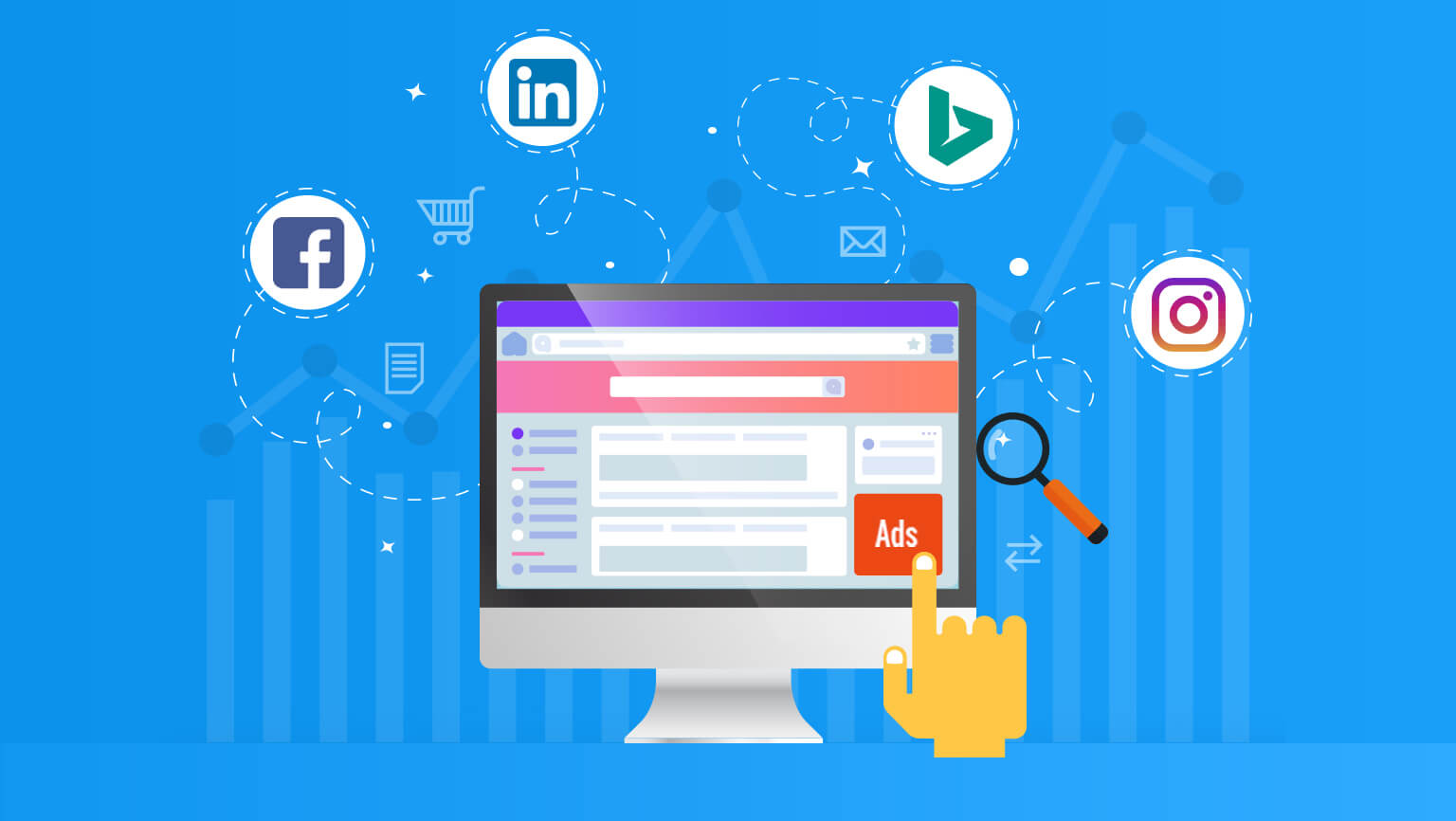






How to Expand Your PPC Campaign Beyond Google – Thank You for sharing this article.